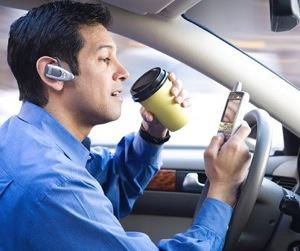Community
OSHA Expands Company Driver Cell Phone Policy
July 08th 2011 by Staff Writer

Distracted driving takes both the eyes and the mind off of the road, which are examples of both risk taking and complacent behavioral issues. Texting, web surfing and phone dialing are particularly dangerous because they take the driver’s eyes off of the road (risk taking). Even hands-free devices are considered dangerous because the driver’s mind is off of the road (complacency). But many drivers incorrectly consider hands-free devices as a safe alternative.
The current OSHA policy is to use the General Duty Clause (Section 5a1 of the OSH Act of 1970) to enforce a cell phone and texting ban while driving. The General Duty Clause states that employers shall furnish employment and a place of employment which are free from recognized hazards that are causing or likely to cause death or physical harm to employees. OSHA will determine whether or not company policies or behaviors contributed to or condoned the cell phone use that resulted in a crash. OSHA also reserves the right to investigate credible employee complaints about work-related cell phone use or texting.
Richard Richardson Blog
Click Above Pics to See More
Revised OSHA policy
OSHA’s revised policy now includes all private employers in the United States, and all employees that drive for the company regardless of license type. All industries are affected including home health, construction, and sales service drivers.
When OSHA is notified of a fatality the investigation phase begins. OSHA will respond and begin their investigation of the incident, and of the employer’s safety, documentation, and prevention efforts. During this phase, cell phone records will be requested and company cell phone policies and enforcement policies may be questioned.
Zero tolerance for distracted driving
Just about every employee on the payroll has a cell phone or smart phone, whether it’s the company’s or their own. Young workers use texting as a favorite method of communication. MEM has always recommended that employers ban the use of cell phones, texting and smart phones while driving. MEM also recommends that companies adopt a written seat belt policy. The recent changes to OSHA regulations add another reason why employers need to implement a cell phone/phone distracted driving policy. Find some resources for building a policy in MEMIC WorkSafe Center's defensive driving tutorial.
Vehicle crashes are the number one way to die on the job. Do your part. Reduce the contributing behavioral factors of both complacent and risk taking behaviors that result in crashes. Develop written policies. Enforce the rules. Lead by example and do your part to create an accident-free work environment.
Mark Woodward is a Loss Control Specialist at Missouri Employers Mutual Insurance Company in Columbia, Missouri.
Last Updated on July 08th 2011 by Staff Writer
https://showmetimes.com/Blogpost/uj77/OSHA-Expands-Company-Driver-Cell-Phone-Policy

